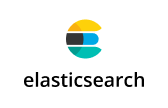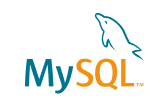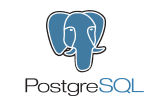Data caching
Redis provides high speed data access, allowing you to cache frequently requested information and reduce database load.
Focus on business growth with a fully managed Redis service: scale, highly available and secure your Redis infrastructure.
Redis provides high speed data access, allowing you to cache frequently requested information and reduce database load.
Supports message queue mechanisms, which allows you to organize asynchronous processing of tasks and data flow control.
Provides the ability to store user sessions, providing quick access and session state management.
Supports publish-subscribe (Pub/Sub) and other mechanisms that enable the development of reactive applications with messaging between components.
Has built-in support for geoindexing, making it useful for working with geographic data and performing location-based queries.
Our platform allows you to deploy a ready-to-go cluster quickly and efficiently, with minimal time and effort. With automatic backup and replication, you can rest assured that your data is safe and available.
Scale up anytime to support your business growth. Change the size of your Redis clusters at any time by adding more CPU, RAM, and storage. Add additional nodes with ease to improve operations and performance.
Redis allows you to store any type of data, including strings, numbers, lists, hashes, and more, giving you the flexibility to work with different types of data.
Focus on growing your project while we provide easy maintenance of your database. We offer a full range of services including backup, monitoring, resiliency and software upgrades.
Managed Service for Redis provides customizable database cleanup to manage data volume and maintain performance and optimize costs.
The DBaaS concept involves storing and managing data in a cloud environment, where the user does not need to install and maintain a database - he gets a ready-made and optimized solution in the cloud.

Open source distributed streaming processing platform. Provides high throughput and ensures streamlined data delivery between producers and consumers. Ideal for streaming data processing, event-notification architecture implementation and real-time big data processing.
Discover
High-performance open source columnar database. Provides fast analytics and big data processing. It is optimized to run complex analytical queries on large datasets. ClickHouse offers high speed, efficient resource utilization and scalability, making it a popular choice for real-time analytics and big data workloads.
Discover
A distributed search and analytics system. It is well suited for scenarios where fast and scalable data access is required, such as site search, log analysis and real-time data monitoring.
Discover
High-performance distributed database with great flexibility, scalability and parallel query processing. It is the best choice for analytical tasks and big data processing.
Discover
A flexible NoSQL database optimized for storing unstructured data such as documents, images and social media. With easy scalability and high performance, MongoDB is the ideal choice for Big Data projects and applications requiring real-time data processing.
Discover
A powerful relational database that provides high performance and reliability. It is optimally suited for web applications, e-commerce and CMS where handling large amounts of structured data is important.
Discover
A powerful data mining and analysis tool optimized for processing large volumes of data and extracting valuable insights with full-text search, advanced analytics and data security. Well suited for complex analytical systems and real-time data monitoring.
Discover
A powerful and reliable open source relational database. It has a wide range of features, supports ACID transactions and provides flexibility for storing and processing structured data. Supports extensions and provides powerful features for database developers and administrators.
DiscoverProvide continuous protection and instant access to rapidly growing datasets. Highly scalable and cost effective storage that integrates with your application scenarios.
Distribute traffic and workloads in the most efficient way: no server downtime, overload or underutilization.
Can't find an answer to your question? Ask us and we'll tall you!
Redis is an open-source, in-memory database management system categorized as a non-relational database (NoSQL). NoSQL databases are optimized for working with large amounts of data, allow you to use a flexible data model, have low latency by reducing the requirements for data consistency inherent in other types of databases.
Redis has a variety of provided data structures to fit modern workloads and can meet the needs of a wide variety of applications. Data types supported in Redis include strings, hashes, streams, lists, sets, sorted sets with range queries, bitmaps, hyperlogs, and geospatial indexes.
Redis provides asynchronous replication, high availability, and flexible scalability. It is easy to use and reduces the amount of code to organize data storage, processing and access in applications.
Redis can be used as a fast data store, cache or message broker. It is a powerful tool that can serve as a data server to store and retrieve data in real time. With Redis, you can implement high-performance data caching or integrate it into systems for journaling or monitoring purposes.
Redis is often used for the following tasks:
The data that is stored in Redis resides in RAM, which provides low latency, high throughput. In Redis, read and write operations take a fraction of a millisecond on average, which is significantly faster compared to traditional databases. This property is ideal for data caching. Caching reduces the load on a traditional database and increases processing speed.
Many web pages are created from templates that use static content such as banners or footers. Static elements do not change frequently and can be cached for quick access. The cache reduces processing time and server load, allowing web servers to respond faster to requests.
Redis can be used to store session data such as shopping carts, user profiles, credentials, individual user settings, and other user data that a web application can associate with user cookies. A large number of cookies may adversely affect performance as the size of cookies is increased, transmitted and checked with each request. Such data can be cached using Redis and thus significantly improve system performance.
Redis supports Pub/Sub with pattern matching and many different data structures such as lists, sorted sets and hashes. This provides support for high-performance chats, real-time comment threads, social media feeds, and server-side interactions.
Redis is used for real-time data processing and implementing game mechanics when, for example, if you need to create real-time leaderboards or score tables. "Sorted Sets" in Redis is a built-in data structure that simplifies the creation and management of leaderboards.
Managed Service for Redis is a service that provides a ready-to-use Redis database management system, which cluster uses cloud architecture for hosting.
You can focus on working with the database, enjoy all its benefits, and we will take care of the technical issues of organizing the database cluster and its operation.
Our area of responsibility includes:
Full backups for Redis clusters are performed by default once a day, between 1:00 AM and 5:00 AM GMT+4. During the backup, the cluster remains available.
Cluster transaction logs are also saved, allowing you to restore the state at any point in time within 7 days, except for the last 30 seconds, whose transactions have not yet been saved.
Our service supports Redis versions 6.2 and 7.0.
DBMS software is updated automatically when new minor versions are released. The owners of database clusters receive notifications about the software update work deadlines and possible database availability limitations to their e-mail and personal account no later than 7 days prior to the update installation.
If the DBMS version you are using is no longer supported by the developer, you will retain access to your data. However, in this case the creation of new cluster nodes may be restricted and you will be notified by e-mail and in your personal cabinet about an automatic upgrade to the nearest supported version. This upgrade will be performed even if you have disabled automatic upgrades.
The client will be notified about minor version update at least 7 days in advance, about major version update at least 1 month in advance. Upon receipt of such notification, the customer should check the software interfacing with Redis for compatibility with the new version. If necessary, Customer should take steps to ensure compatibility with the new version. after receiving updates.
Memcached and Redis are popular in-memory caching systems that are used to improve the performance of web applications. It is impossible to unequivocally choose the best one, as the evaluation will depend on the usage scenario of the product and the task it solves.
Here are the main differences between Memcached and Redis:
Redis is a data store with a wide range of supported data types, Memcached, only supports storage and access to byte arrays.
Redis offers a rich set of functionality such as transactions, publish/subscribe, the ability to run scripts on the server, and more. Memcached is a simple solution and is limited in functionality focusing on data caching.
Redis has a built-in ability to permanently store data to disk, allowing data to be restored after a server restart. Memcached does not offer native support for persistent data storage.
Redis offers horizontal scalability using replication and clustering. Memcached does not have native support for horizontal scaling, and scaling is typically achieved by deploying multiple independent instances.
Memcached is a simple and lightweight solution with a simple API, making it easier to use and customize. Redis has a more complex API and more features, which requires a deeper learning curve to use it effectively.
So, choosing between Memcached and Redis depends on the specific requirements of your project. If you need a simple solution for caching data, Memcached will do. If you need to cache more complex structured data, you will need Redis.

If you work in IT, the term “cloud” isn’t just a buzzword — it’s a powerful tool for storing and processing data.

PaaS (Platform as a Service) was initially designed as a solution for developers to build applications without dealing with server setup and infrastructure management.

TCP/IP is the backbone of everything. This protocol stack is like the circulatory system of the Internet and cloud computing.